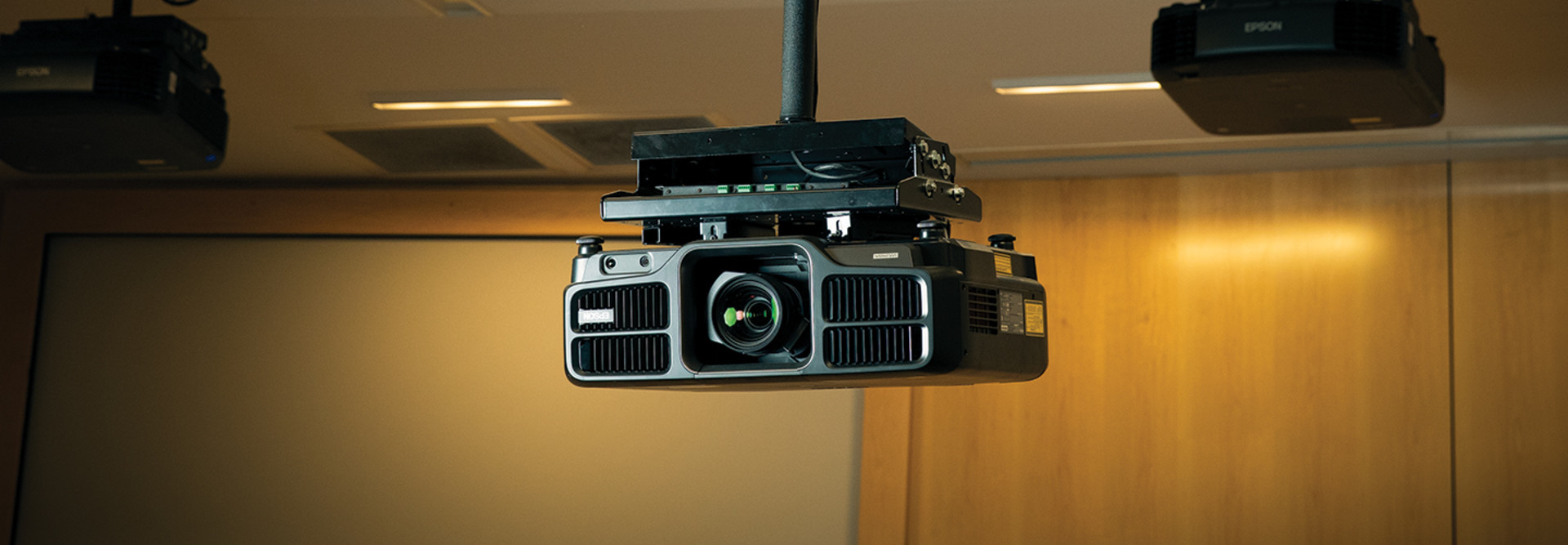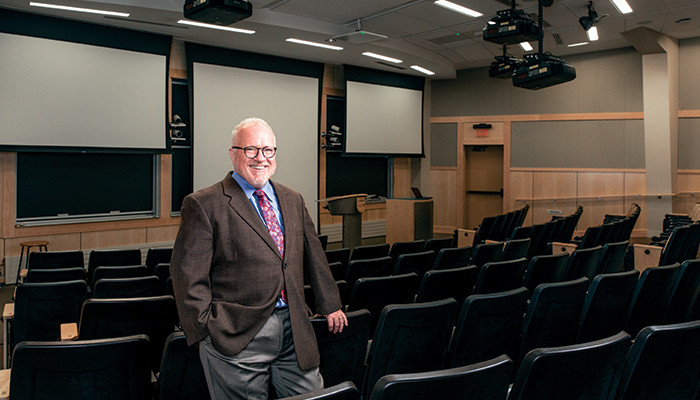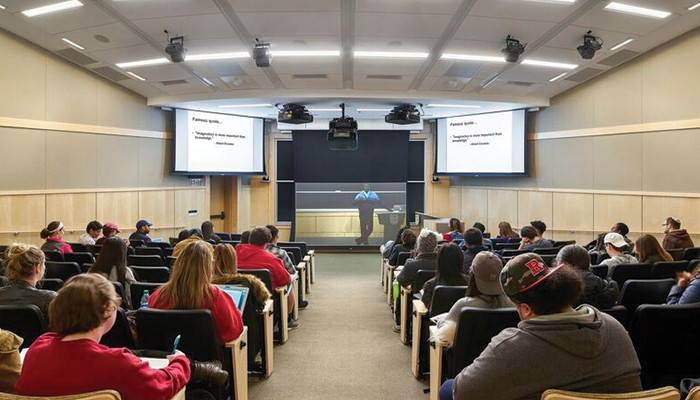Connected videoconferencing tools allow professors at Rutgers University-New Brunswick to offer a new kind of classroom experience, says Matthew Wilk, associate director of technical services & operations digital classroom services. Photography by: Colin Lenton.
Cisco’s Webex Meetings tool supports real-time video, voice and chat communications anywhere users have an internet connection. It’s exceedingly user-friendly, running on a laptop or mobile device through a web browser or app.
“The good thing is that most people are familiar with the technology and are relatively comfortable using it,” says Wilk.
The Cisco TelePresence solution, the technology at the heart of a Rutgers initiative dubbed “immersive synchronous lecture halls,” requires a bit more training, he says.
The platform includes five Cisco TelePresence Precision 60 PTZ HD cameras, 45 microphones (40 at ceiling level), seven Epson 12000-lumen laser projectors displaying onto 119-inch screens and an array of inputs for HD video, controlled by the instructor at an “immersion lectern” (a custom user interface designed in-house and positioned at the front of the room).
With the click of a button, Wilk says, a professor teaching in one classroom can broadcast his or her live and life-size image to a similarly equipped room on a different part of campus.
What’s unique, he notes, is that these lecture halls create an environment in which faculty and up to 275 students can interact simultaneously between both locations.
“It’s not your standard videoconference environment,” he explains. “It’s as if they’re right there next to them in the same class.”
Collaboration Tools Bring Flexibility to Various Campus Tasks
While Rutgers is on the leading edge of videoconferencing in the classroom, it’s hardly alone in recognizing the potential to revolutionize learning. That’s become easier as the technology has matured.
“Initially, these tools were pretty complex, and they presented a lot of challenges for teachers who wanted to try them,” says Eric Kunnen, associate director of e-learning and emerging technologies at Michigan’s Grand Valley State University. “But now I think those barriers are falling by the wayside. We’re seeing solutions that can be launched right from a browser, without extra plug-ins or the need for anything to be installed. Overall, they’re much more robust and significantly easier to use.”
At the same time, Kunnen adds, many universities view videoconferencing as a strategic investment.
“The current generation of students is coming to campus with video being part of their daily life,” he says. “If you’re not doing what you can to connect with them — to offer them that flexibility around how they want to be engaged, and to give them opportunities to learn remotely — I think you’re going to be missing the boat.”











